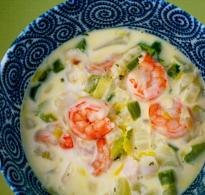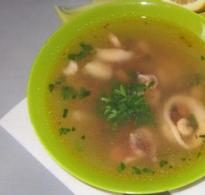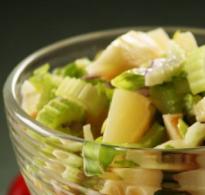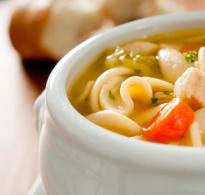Pretty much everything you wanted to know about malt extracts but were afraid to ask. Malt and malt preparations
The idea of a healthy diet excites many people now. The modern rhythm of life provokes an irregular and monotonous diet, which leads to reduce the consumption of essential components. But it has long been known that nutrition is the main component of our health. It determines the normal growth and development of children, disease prevention and human longevity. Irrational nutrition and the deterioration of the ecological situation make it urgent to search for natural substances containing vitamins and minerals necessary to increase the body's resistance to the effects of unpleasant environmental factors.
Foreign experience suggests that the most effective way to combat micronutrient deficiencies is to fortify with vitamins and minerals mass-market products such as bakery products, drinks and baby food.
Today, products are beginning to appear on the market, focused not only on the technological improvement of products, but also on improving their nutritional properties. Among them are beta-carotene, which is used as a dye and is a provitamin A, ascorbic acid is a traditional improver of oxidative action, as well as all kinds of malt preparations, which are used as enzyme preparations and as improvers of the organoleptic properties of bakery products. Such additives make the product tastier and more attractive and at the same time healthier. In this regard, more and more enterprises give preference to natural improvers containing natural nutrients and guaranteeing their good digestibility by the human body.
How Malt Extracts Are Made
Malt extracts are made from malted whole grains. The most common raw material is barley, but other grains such as rye or wheat are also used. The manufacture of malt extracts begins with the production of malt. The natural biological activity of the grain is awakened by the use of water and the optimum temperature. The germination of grain continues for several days, then it dries up and becomes malt. The malt undergoes processing in the process of mashing, extraction and evaporation. The result is a thin, viscous malt extract.
During the mash preparation process, most of the starch in the grain is converted to fermentable sugars. At the extraction stage, the amylolytic enzymes present in the grain liquefy the remaining insoluble starches, turning them into maltose and dextrins. Proteolytic enzymes at the same stage dissolve proteins. In the last step of the process, the insoluble shells are removed from the extract.
Different types of malt extracts are produced according to the raw material and the highest temperature used in the process. Different varieties of the original malt (toasted, caramel) affect the color of the extracts. Extraction temperature affects diastatic activity in a similar way to fermented malt production - the higher the temperature, the lower the residual diastatic activity in the product.
No artificial ingredients are used in the production of malt extracts. As a result of their production process, active malt enzymes hydrolyze and make soluble starch, proteins and other components of the grain, which causes the effect of malt extracts on products.
Properties of malt extracts
As a result of extraction, the malt extract has a thick consistency (about 80% solids). The development of microorganisms in it is impossible, and therefore the malt extract is very well stored.
Malt extracts are available diastatically active and inactive. Inactive extracts are produced in various colors and flavors and have a rich composition of reducing sugars. Diastatically active malt extracts are valuable for the presence of amylolytic and proteolytic enzymes.
Along with the characteristic flavoring substances, malt extracts also contain a number of different carbohydrates (especially maltose, dextrins, glucose, fructose). These sugars contained in malt are very interesting for the baking process from various points of view.
First, due to the digestible substances found in the malt extract, the yeast is given a large amount of the right food and a rich substrate for fermentation. This suggests that they can always be used to speed up the fermentation process. The advantage in this case will be a reduction in fermentation time or savings on yeast. In most cases, accelerated fermentation is reflected in an increase in the volume of bread.
This property of malt extracts is also used in yeast and pharmacological industries - malt extracts are used to grow a pure culture of yeast and other microorganisms.
Secondly, the maltodextrins contained in the malt extract determine its water-retaining capacity, which contributes to the increase in moisture and thus allows for a more tender crumb in bread, biscuit and rolls, and at the same time increase the shelf life of products.
Thirdly, malt extract sugars increase the gas-forming ability of the flour and thereby reduce the proofing time, and also contribute to the structuring of the properties of the dough.
Fourth, rye and dark malt extracts have good coloring power. The rich color of the malt extract sets the color of the rind and crumb. The color of the crust improves due to the reaction of melanoidin formation - the interaction of amino acids and sugars contained in the dough. Therefore, malt extract is a great natural alternative to artificial colors.
The sugars of malt extracts do not crystallize when boiling invert syrups, which is a big plus in the production of caramel and confectionery.
A unique property of malt extracts is their effect on the taste and aroma of foods. The characteristic bready taste of the malt extract components is formed during the malting of the grain and, most importantly, during the dissolution and extraction process, when the malt turns into malt extract.
In addition, malt extracts soften the high acidity of rye flour bread, improve the consistency of dough for small pastries, contribute to the golden color and crunchy taste of crackers and breakfast cereals, give products a balanced natural sweetness, natural taste and aroma, and can be used instead of sugar and sweet syrups. .
When using diastatically active malt extracts, due to the increase in the amount of amylolytic and proteolytic enzymes in the dough, flour starch is continuously saccharified, while maltose and other sugars are formed. They form an additional nutrient medium for yeast, changing their action during fermentation. These sugars, along with wheat flour protein, also create natural blends that provide a brown crust at normal baking times.
Malt and malt flour have traditionally been used in the production of rye bread. With the advent of malt extracts, the scope of malt preparations has expanded significantly.
So, malt extracts:
- most directly affect the organoleptic characteristics of finished products, improving the taste, aroma, properties of the crust, increasing the volume;
- increase the shelf life of products;
- increase the yield of finished products due to the water absorption capacity of the sugars contained in the malt extract, make it possible to save on yeast;
- diastatically active malt extracts have a beneficial effect on the sugar-forming ability of flour, improve the quality of dough from flour with strong gluten, and help stabilize the properties of the dough;
- improve the gas-forming ability of flour;
- improve fermentation due to the content of a valuable substrate for yeast.
In other words, with the use of malt extracts, the processes on which the baking process is based are accelerated and revived and have a beneficial effect on the quality of a wide range of food products.
In terms of healthy eating
Both inactive and diastatically active malt extracts have a valuable composition and positively affect the physiological value of the products. Analysis of the composition of malt extracts shows that it is rich in B vitamins, phosphorus, potassium and other trace elements that have a beneficial effect on human health.
In addition to the listed micronutrients, malt extracts contain essential amino acids and polyunsaturated fatty acids, plant enzymes.
Pure malt extracts are used for baby food, for enriching the diet of athletes, for treating diseases of the lungs and digestive tract, and for normalizing metabolism.
The addition of malt extracts, in addition to technological quality improvement, also solves the problem of enriching traditional food products with micronutrients.
Thus, 200 g of rye bread prepared using malt extracts contains the daily intake of phosphorus and iron, as well as vitamins B1 (80%), B2 (19%), PP (56%) and magnesium (47% of the daily intake). ).
Not only bread is enriched with malt extracts. They are traditionally used in the production of baby food, both for milk mixtures and for cookies. Malt extracts are found in many dietary supplements and products for athletes.
Practical issues in the use of malt extracts
The most widespread use of malt extracts is in the production of rye bread. Rye and dark malt extracts are used as a substitute for fermented rye malt in a ratio of 1:5 in the production of custard bread.
The same industry uses pale standard malt extracts as a substitute for molasses.
Tests have shown that malt extracts have a positive effect both on the organoleptic characteristics of bread, improving their appearance, aroma and taste, and on the course of the technological process. Malt extracts are convenient to use. Their viscosity is significantly less than the viscosity of molasses, which eliminates the need for heating before serving. In addition, malt extracts are unpretentious in storage, they can be easily transported, unlike malt, they are not afraid of pests, they tolerate high temperatures well, without changing their acidity.
The combination of these factors suggests that malt extracts are more cost effective than the malt and molasses they replace.
The use of malt extracts in the production of gingerbread is due to both the general improving effect on the product (preservation of freshness, malty taste and aroma, dark color), and the peculiar properties of the glaze prepared using dark malt extract.
Regarding general recommendations for use, the following can be said:
- light active and inactive malt extracts are dissolved in warm water, yeast is separately dissolved in water, a dough or dough is placed on a mixture of solutions of malt extracts and yeast,
- rye and dark malt extracts are used as a substitute for fermented rye malt in a ratio of 1:6, while they are added to sourdough, brew or dough,
- to give a dark color and rye flavor to bakery products, malt extracts are added to the dough,
- molasses is replaced by malt extracts for reducing substances, on average, instead of 1 kg of molasses, 0.8 kg of malt extract is taken; however, there is no need to heat the malt extract, since it has a significantly lower viscosity compared to molasses.
Analysis of the properties of malt extracts indicates that malt extracts are healthy, natural, palatable multi-purpose food ingredients. They are able in a natural way to significantly increase the taste, biological value and pleasure of consuming a wide variety of food products.
To improve flour with low sugar-forming and gas-forming ability, malt and various preparations from it can be used - malt flour, malt extract and malt extracts. In our bakery, the use of red malt for rye custard bread and white malt for Riga bread is widespread.
When baking wheat bread from flour of the highest and first grades, neither white malt nor flour from it is added, since their addition would cause a noticeable darkening of the bread crumb. Therefore, so-called malt extracts are used for wheat bread.
Malt extracts
The components of active white malt, its enzymes, sugars and dextrins, which are the most valuable for baking, almost completely pass into the aqueous solution. Therefore, if you prepare an aqueous extract from malt and boil it (at reduced pressure and low temperature so as not to destroy the enzymes), you will get an extract - a thick syrupy mass containing all the water-soluble parts of malt, including its enzymes, sugars and dextrins. Such an extract is free from shells and large particles of grain, which cause a darker color of the crumb. The use of malt extracts is widespread in a number of countries.
The composition of various malt extracts, according to the Central Laboratory of the Leningrad Bakery Trust, is shown in the table.
Malt extracts improve gas formation in the dough, since they consist of about half of fermentable sugars and, in addition, contain active amylolytic enzymes, in particular α=amylase. Proteolytic enzymes of malt extracts also play a significant role, as well as the content of proteolysis activators in them, noted by Tulchinsky.
The use of malt extracts with high proteolytic activity and a high content of proteolysis activators when making bread from weak flour with weak gluten can lead to a deterioration in the quality of bread, to an increase in its spreadability. Therefore, when characterizing the quality of malt extracts, one should be guided by indicators not only of the chemical composition, but also of their enzymatic activity.

When establishing the production of baking malt extracts in Russia, it is necessary to establish the requirements for their amylolytic and proteolytic activity. In order to inactivate proteolysis activators contained in malt extracts, it is advisable to produce malt extracts with the appropriate additions of potassium bromate.
The content in the malt extract of large amounts of maltose and significant amounts of dextrins can have some improvement effect on the physical properties of the dough and gluten. This phenomenon was stated by Tulchinsky and Falunina, who, as mentioned above, gave an explanation for this phenomenon.
The dosage of malt extract, depending on its enzymatic activity and the properties of the flour, ranges from 1-3% of the weight of the flour. The Leningrad Central Laboratory recommends adding malt extract not to the dough, but to the dough.
The greatest effect (increase in bread volume up to 50%, normal coloring of the crust) is given by malt extract when applied to flour with a low sugar-forming ability. The use of malt extract somewhat slows down the staling of bread.
Bread made with malt extract contains more soluble carbohydrates and has a finer porosity and is therefore easier for the human body to digest.
Barley malt extract is a natural product extracted from germinated barley grains, which are dried at a certain stage of germination and fermentation to preserve the chemical composition and maximize the beneficial properties. Then they are ground, mixed with water to form a solution and undergo further processing, followed by clarification.
Barley malt extract contains carbohydrates, trace elements, minerals and amino acids, cereal starch, sugars, enzymes, fiber. It looks like a thick, viscous brown liquid (the shade depends on the degree of clarification) with a sweetish taste (caramel notes may be present) and barley aroma.
Useful properties of barley malt extract
The extract is completely soluble in water, gives a pleasant taste, color and smell to various products, acts as a natural sweetener - its sweetness is about 60% of that of sucrose. In addition, it has the ability to retain moisture, reduce acidity, and extend the shelf life of food and pharmaceutical products when it is included in the composition.
Malted barley extract is a source of:
- Selena;
- phosphorus;
- manganese;
- magnesium;
- calcium;
- vitamins A, E and group B.
Amino acids in its composition stimulate protein metabolism, growth and development of muscles in the human body. Due to the fiber content, it is easily digested and has a positive effect on the gastrointestinal tract:
- activates digestion;
- enhances intestinal motility;
- helps to remove waste and toxins.
Dietary fiber and vitamin B4 create a choleretic effect, which helps prevent the formation of bile stasis and the development of cholelithiasis. Vitamins A, E, B2 and B3 coat the mucous membranes of the stomach and intestines, contributing to their healing. In addition, barley malt extract has a tonic and regenerating property, is a source of energy and helps to activate the brain.
Areas of application of barley malt extract
The rich chemical composition and the above properties make the use of barley malt extract useful:
- for the prevention of gastritis, colitis, enterocolitis, gastric and duodenal ulcers*;
- to prevent cholecystitis, inflammation in the bile ducts;
- to restore the gastrointestinal tract after prolonged intoxication;
- for recovery after surgery;
- to increase endurance and build muscle during intense training;
- in asthenic conditions (chronic fatigue, weakness);
- to stabilize blood sugar levels in diabetics**.
** Malt slows down the breakdown of carbohydrates and avoids sudden spikes in glucose levels, affects the production of insulin by the pancreas and is one of the best sweeteners.
To date, barley malt extract has been included in syrups from the Apifitopharm company.
In our country, dry fermented and non-fermented rye malt is produced.
Dry fermented rye malt(red or stewed) is obtained by sprouting rye grains, fermenting (stewing), drying and grinding. Malt unfermented(light or non-stewed) is obtained in the same way, but without the fermentation process.
The process of "fermentation" refers to the process of holding (languishing) germinated rye grains at a high temperature. Fermented malt, in addition to this operation, is also dried at high temperatures.
At the same time, in rye malt, the process of formation of melanoidins intensively proceeds, giving the malt both a red (more precisely red-brown) color and a specific taste and aroma. It is for these properties that this type of malt is produced.
In fermented malt, the activity of enzymes is very low - several times less than that of ordinary rye wholemeal flour, since the high temperature at the stages of languishing and drying leads to inactivation of enzymes. Therefore, fermented rye malt should be considered not as an enzyme preparation, but as an additive that improves the color of the rye bread crumb (the crumb acquires a pleasant brownish-brown color), its taste and aroma. It has already been noted in Chapter VIII that a similar effect can be obtained by baking rye bread from wholemeal flour for a considerably longer time and without the addition of red rye malt.
Fermented (red) rye malt is usually added to the brew used in the preparation of rye custard, Borodino and some other types of bread.
However, the preparation of red rye malt is a laborious, lengthy process, and even with the most rational technology, it is associated with the loss of about 20% of the dry matter of the rye grain.
Rye malt dry unfermented unlike fermented, immediately after germination, the grain is dried.
Drying is carried out at reduced pressure and temperature, so that α-amylase, irotheolytic and other enzymes, the activity of the ryhm increased sharply during the germination of the grain, and retained this activity after drying. The malt crushed after drying has a light color, very close to the color of flour (which is why it is often called white malt), and a sharply increased activity of enzymes, especially α-amylase.
Therefore, this type of malt (pefermeitirovany) is used in baking as an α-amylolytic enzyme preparation (EP) and for saccharivapy tea leaves in the preparation of Riga and some other types of bread, as well as an improver in the processing of wheat flour with reduced sugar and gas-forming ability.
It should be noted that in the practice of the domestic baking industry, white malt with a high activity of enzymes is used only in a limited number of the corresponding types of bread and is provided as an obligatory component of the recipe in a certain dosage that is not linked to the properties, and in particular with the sugar and gas-forming ability processed flour.
In a number of countries, the addition of highly enzymatic white malt or malt extract has been linked to the sugar-forming capacity of the flour.
When preparing wheat bread from wheat flour of the highest and I grades, it is advisable to use instead of crushed, fermented malt malt extracts.
The components of active white malt that are most valuable for baking - its enzymes, sugars and dextrins - almost completely pass into an aqueous solution. Therefore, if you prepare an aqueous extract from malt and boil it down (at reduced pressure and temperature so as not to inactivate the enzymes), you will get an extract - a thick syrupy mass containing all the water-soluble parts of the malt. Such an extract is free from shells and large particles of grain, which cause a darker color of the crumb. The use of malt extracts is widespread in a number of countries.
Malt extracts improve gas formation in the dough, since they consist of about 60% fermentable sugars and, in addition, contain active amylolytic enzymes, in particular a-amylase. Proteolytic enzymes of malt extracts, as well as protsolysis activators, also play a significant role.
The use of malt extracts with high proteolytic activity and a high content of proteolysis activators in the preparation of bread from weak flour with weak gluten can lead to a deterioration in the quality of bread, to an increase in its spreadability. Therefore, when characterizing the quality of malt extracts, one should be guided by indicators not only of their chemical composition and α-amylolytic activity, but also of proteolytic activity.
The dosage of malt extract, depending on its enzymatic activity and the properties of flour, ranges from 1-3% by weight of flour.
The greatest effect (a significant increase in the volume and porosity of bread, normal coloring of the crust) is given by malt extract added to flour with a low sugar-forming ability. The use of malt extract lengthens the period of consumer freshness of bread.
Wolfgang Kunze
The production of beer wort from malt and hops is a complex labor-intensive process. The main stage of wort preparation - mashing - consists in mixing malt with water and keeping this mixture (mash) at certain temperatures that are optimal for the action of enzymes.
The purpose of mashing is to obtain the maximum amount of useful malt extractives separated from the grains during the filtration process.
By evaporating the water from the wort, this extract can be obtained in a concentrated form.
Malt extract is a dark viscous syrup with a very sweet taste, containing all the nutrients of the wort.
Malt extract is used as a structuring and concentrating component in the form of syrup or powder.
It is also used in the bakery and chocolate industries as a sweetener and improver, and more recently there has been a growing demand for malt extract for home brewing. Many hobby brewers at home seek to avoid the mashing process, and above all the laborious process of filtering the mash, by starting their brew with malt extract diluted with water as normal wort. The wort from the unhopped extract is then boiled with hops. This malt extract can be purchased from the respective stores.
The quality of the malt extract is highly dependent on the quality of the wort from which it was made. From the very beginning, its mashing is carried out thicker than in conventional brewing, because otherwise it would take too much energy to evaporate the water from the wort. The wort is thickened to an extract content of 75-80%, but to facilitate re-dissolution, the degree of concentration is often set to a much lower one.
Evaporation of water from the wort at normal pressure and temperature of 100°C takes a long time, and many products of the Maillard reaction (melanoidins and Strecker's aldehydes) are formed in the wort. The wort becomes very dark and, due to the increased thermal load, acquires corresponding undesirable taste changes. To avoid this, the water is evaporated under vacuum at a lower temperature (at a pressure of 0.1 bar, the boiling point is about 46°C; at a pressure of 0.2 bar, this temperature is 60°C). The condition for this process is the presence of the following equipment:
Vacuum-tight agitated kettle,
sealed piping system,
Vacuum pump.
Under these conditions, the quality of the concentrated wort can be fully preserved until re-dilution.
For evaporation, special vacuum evaporators are used.






